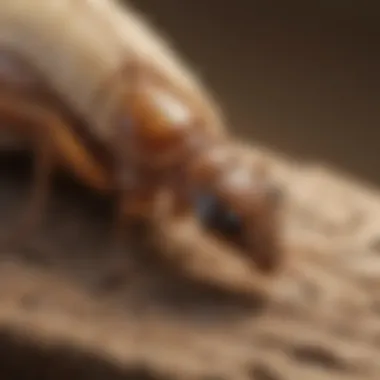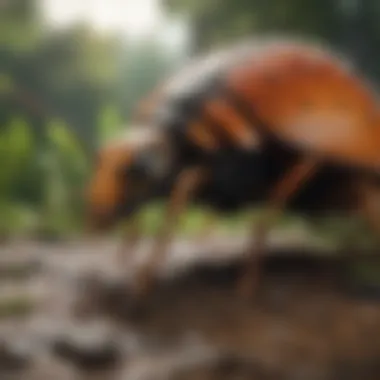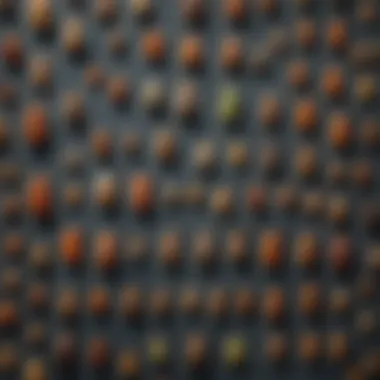Understanding Pest Control Dynamics: A Deep Dive


Intro
Pest control is a crucial aspect of maintaining a healthy and comfortable living environment. Understanding the dynamics of pest management, especially concerning insects like termites, is essential for homeowners. This article aims to provide insights into the effective strategies for pest control, from identification to prevention and treatment options. By familiarizing oneself with the pests that invade homes, the signs of infestations, and the methods to combat them, readers will be equipped with the knowledge to protect their spaces where they live and work.
Pest Identification
Identifying pests is the first step in effective pest control. Knowledge of common pests is vital for recognizing potential threats before they escalate.
Detailed Descriptions of Common Pests
Several pests are notorious for causing damage and inconvenience in homes. Among them are:


- Termites: Known for silently damaging wood structures, these pests feed on cellulose. They are often found in damp areas, and their presence can go unnoticed until significant damage occurs.
- Ants: Various species, including carpenter ants and odorous house ants, can invade homes in search of food. Their trails can be seen leading to and from food sources.
- Cockroaches: These pests are highly adaptable and can thrive in a range of environments. Signs of their presence include droppings and shed skins.
Recognizing these pests early can prevent extensive damage and high costs.
Signs and Symptoms of Infestations
Knowing the signs of infestations can help in taking immediate action:
- Termites: Look for mud tubes, discarded wings, and hollow-sounding wood.
- Ants: Watch for foraging trails and nests near food sources or in wall voids.
- Cockroaches: An increased presence of droppings, a strong, musty odor, and sudden sightings are key indicators of an infestation.
The earlier you identify a pest problem, the easier it is to manage.


Prevention Strategies
Effective prevention can save homeowners from the headache of dealing with infestations. Here are some vital steps:
Home Maintenance Tips for Pest Prevention
- Seal Cracks and Openings: Check windows, doors, and foundation for gaps. Use caulk and weather stripping to close these entry points.
- Remove Standing Water: Inspect areas where water accumulates. Pests are often drawn to moisture.
- Maintain Cleanliness: Regularly cleaning food crumbs and clutter can undermine a pest's resources.
Natural Deterrents and Barriers
Employing natural deterrents can deter pests without using harsh chemicals.


- Essential Oils: Oils like peppermint and tea tree have been shown to repel various insects.
- Diatomaceous Earth: This natural powder can be sprinkled around entry points to deter crawling insects.
- Proper Landscaping: Trim back shrubs and maintain the yard to reduce hiding spots for pests.
Treatment Options
When prevention fails, knowing treatment options is imperative. Two broad categories exist: chemical and natural treatments.
Overview of Chemical vs. Natural Treatments
- Chemical Treatments: While they tend to be more effective for immediate eradication, they also pose health risks and require careful handling. Examples include insecticides like Ortho Home Defense and Raid Ant and Roach Killer.
- Natural Treatments: Options such as Boric acid for cockroaches or homemade traps for ants can be both effective and less harmful to the environment.
Step-by-Step Guides for DIY Treatments
For those interested in a hands-on approach, here are simple guides:
DIY Termite Baiting System
- Identify infestations.
- Create a bait using a mixture of starch and Boric acid.
- Place the bait in infested areas. Replace every few weeks.



